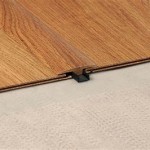Installing vinyl flooring over tile is a popular option for homeowners looking to upgrade their interior design. Vinyl provides a lower-cost alternative to hardwood or marble flooring, and is often easier to install than other materials. But can vinyl be installed over tile? The answer is yes, but there are some important considerations to keep in mind before starting the project.
Preparing the Subfloor
Before installing vinyl flooring, the subfloor must be properly prepared. If the tile is still in good condition, it should be cleaned and sealed. If the tile is cracked or damaged, it should be removed and replaced with a new layer of cement board or plywood. Once the subfloor is prepared, it should be covered with a moisture barrier to protect the vinyl from moisture.
Installation Options
Vinyl flooring can be installed over tile in two different ways: as a direct-glue application or as a floating floor. Direct-glue applications require that the vinyl planks be glued down directly to the tile. This method is more permanent and is usually used for residential projects. Floating floors, on the other hand, are installed on top of the tile without being glued down. This method is often used for commercial projects, as it allows for more flexibility if the floor needs to be removed or replaced.
Advantages of Installing Vinyl Over Tile
Installing vinyl over tile has a number of advantages. Vinyl is a durable and cost-effective flooring option that is easy to maintain. It is also relatively easy to install and can be done without the help of a professional. Additionally, vinyl is water-resistant, making it ideal for bathrooms and kitchens.
Disadvantages of Installing Vinyl Over Tile
The biggest disadvantage of installing vinyl over tile is that it can be difficult to remove if you ever want to replace it. Additionally, it is important to make sure that the subfloor is properly prepared before installation, as any bumps or uneven surfaces can cause the vinyl to warp over time.
Tips for Installing Vinyl Over Tile
When installing vinyl over tile, it is important to use a high-quality adhesive and take your time to ensure the vinyl is properly secured. Additionally, it is a good idea to use a foam underlayment to provide some cushioning and to help protect the vinyl from any irregularities in the subfloor. Finally, make sure to seal the seams between the vinyl and tile to prevent moisture from seeping in.
Conclusion
Installing vinyl flooring over tile is a great option for homeowners looking to update their interior design. It is relatively easy to install and provides a durable, cost-effective flooring solution. However, it is important to properly prepare the subfloor before installation and to use a high-quality adhesive. Additionally, using a foam underlayment and sealing the seams between the vinyl and tile can help to ensure a successful installation.















Related Posts








